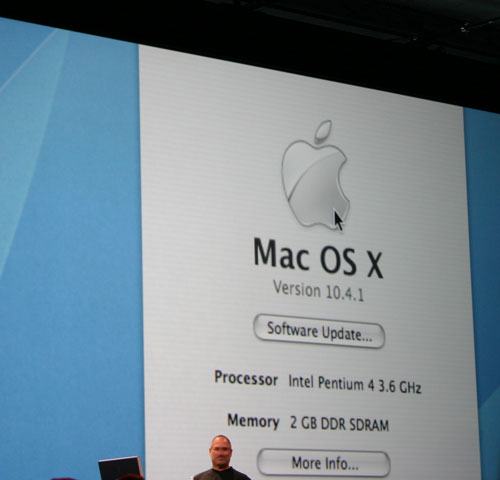nixgeek
Mac of the SubGenius! :-)
mindbend said:When Steve pulled up the About this Mac window, it showed a Pentium 4 3.6 GHZ IIRC. (Can someone grab a screen cap of that window from the keynote, my connection is too slow right now).
There was no indication that it was a dual processor.
I was not particularly impressed with the speed. My dual G5 2.7 was faster than most of his demos or at least as fast as all of them. Having said that, all of the non-Apple software demos were through Rosetta, which is going to be a performance hit initially (until they get ported).
That is my only issue with this transition, is that we'll go through another awkward phase where not all apps are native, though this time around it should be less painful and more consistent.
Here's the screenshot, courtesy of Anandtech.com

